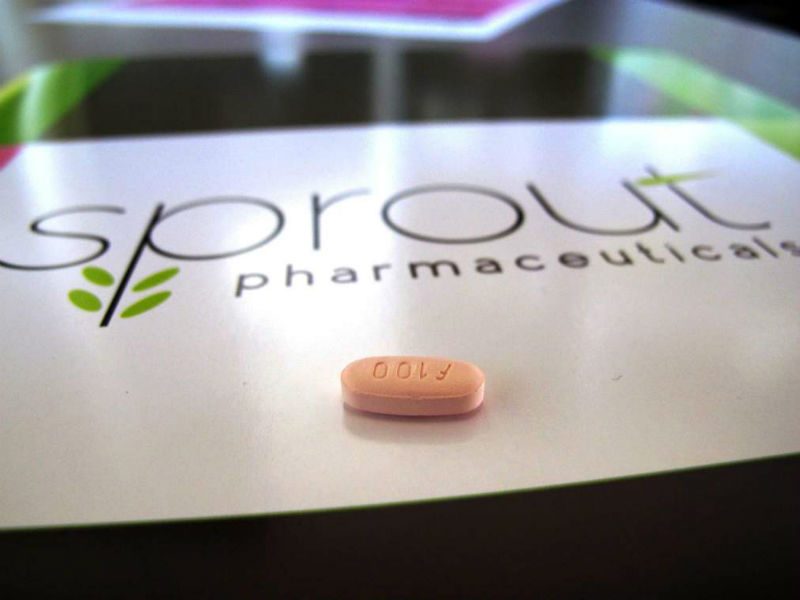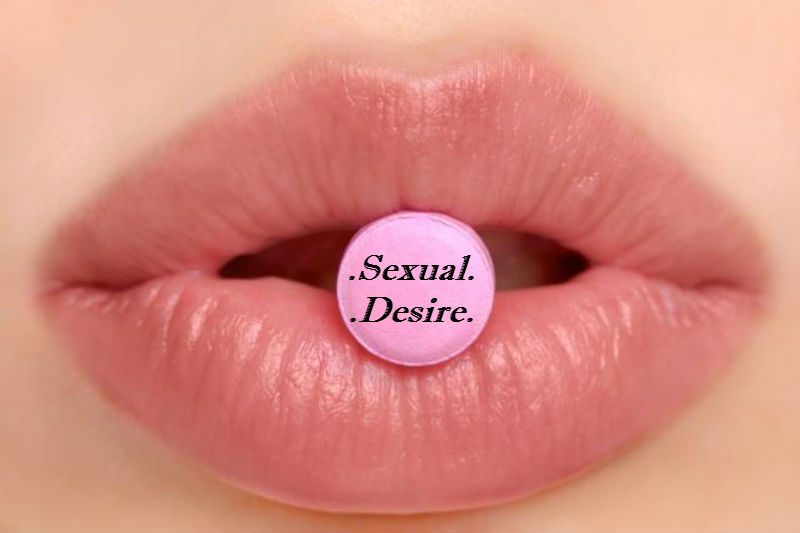Are Lesbians Failing Cliteracy?
It was exciting news for women: On August 18, the Food and Drug Administration approved the first drug for Female Sexual Dysfuction (FSD). Flibanserin–called the “little pink pill” to parallel Viagra’s “little blue pill”–was developed by Sprout Pharmaceuticals to treat hypoactive sexual desire disorder, or low libido, in premenopausal women.
In other words, it’s only a problem if it feels like a problem. But for millions of women it definitely feels like a problem. The “little pink pill” will be sold under the brand name Addyi.
There is no known reason for the onset of FSD, but it impacts millions of women, the majority of whom had no sexual dysfunction previously. While many women have suffered in silence, more have agitated for a Viagra-like pill to get them back to their prior state of sexual desire and orgasm.
Flibanserin has had a rocky road to approval, having been rejected twice in the past five years and still has critics along with its champions. Yet for women suffering from FSD, the drug feels long overdue and it was overwhelmingly approved by the FDA panel this time.
“Today’s approval provides women distressed by their low sexual desire with an approved treatment option,” Janet Woodcock, director of the FDA’s Center for Drug Evaluation and Research, said in a statement. “The FDA strives to protect and advance the health of women, and we are committed to supporting the development of safe and effective treatments for female sexual dysfunction.”
Nevertheless, even though the little pink pill has been tested on more than 10,000 women in nearly 70 studies, critics assert the side effects, which include low blood pressure and dizziness, are dangerous–especially if the drug is mixed with alcohol. As a consequence, the approval comes with the strongest FDA warning out there–a black box warning about the side-effects.
Yet part of the criticism over the FDA’s previous failure to approve Flibanserin has been sexism. The side-effects of Viagra can actually be far more severe than those associated with Flibanserin, yet Viagra was approved in 1998 for erectile dysfunction. Why have men deserved nearly 20 years of satisfaction that women have been denied?
For women suffering from FSD, the side-effects of the little pink pill are likely worth it. Hypoactive Sexual Desire Disorder (HSDD) is actually listed in the Diagnostic and Statistical Manual of Mental Disorders 5 (DSM-5). And while lesbians may have an uncomfortable feeling about the DSM, since lesbianism was included decades ago, HSDD is problematic for millions of women.
The manufacturer of Flibanserin cites a 2008 study in the Archives of Internal Medicine in 2008 found as 26.7 percent of premenopausal women to 52.4 percent of menopausal women experienced low sexual desire. The median age for FSD was 36.
That’s way too young to give up sex.
Flibanserin has been termed the female Viagra, but it works totally differently. Viagra increases blood flow to the penis; it doesn’t cause sexual arousal. Flibanserin targets neurotransmitters, which impact the libido. So while Viagra works on the vascular system, Flibanserin works on the brain.
Cindy Whitehead, chief executive of Sprout Pharmaceuticals was quoted in an interview saying, “Interestingly, when you talk to women with HSDD, they describe that [sexual desire is] out of reach. They remember when they had little thoughts or fantasies in the day when they sent a little text to their husband. They know that it doesn’t matter if they’re on the vacation of a lifetime—they still don’t have the desire.”
 Whitehead was also quoted as saying that the reason some women lose desire has scientific support from brain scans of women. The prefrontal cortexes of women with normal sexual responses light up when they are sexually aroused. But Whitehead asserts that with HSSD don’t have the same response.
Whitehead was also quoted as saying that the reason some women lose desire has scientific support from brain scans of women. The prefrontal cortexes of women with normal sexual responses light up when they are sexually aroused. But Whitehead asserts that with HSSD don’t have the same response.
As Whitehead’s comments indicate, public discourse on HSSD/FSD has centered on heterosexual women who are married. At the FDA hearings, women testified how HSSD had impacted their marriages and also created feelings of low self-esteem because it made them feel, as one woman testified, “defective.”
But it’s not just heterosexual women with FSD as every lesbian and bisexual woman knows. Rumors of lesbian bed death (LBD) have long plagued women in long-term relationships. While lesbian bed death may be overstated (or not–there are over 5 million citations for the term on Google), the reality remains that nearly half of all women have experienced FSD and many of them may be lesbians–they just didn’t get to testify before the FDA, just like we don’t see male couples in those Viagra and Cialis ads.
So since FSD isn’t a straight-women-only problem–just like erectile dysfunction isn’t a straight-man-only problem–that means the little pink pill may be just the thing you have been needing.
Or, maybe not.
Most sex therapists argue that sexual dysfunction in women is best treated with therapy and “homework.”
Dr. Julie Gurner says, start with your relationship. Gurner says, “If you still love your partner, really want to make things work, and haven’t been successful, then consider finding a counselor.” She also says, “Be a proactive couple who strives to solve issues before they tear at the fabric of your deepest bonds of trust and intimacy.”
And intimacy is key to good sex.
So is comfort and lack of stress. Yet sex therapists agree that when there’s been disruption of your sexual relationship, sex is best when “planned”–when both partners are expecting to work on their intimacy.
Sex educator and Lambda Literary Award winner Jenny Block, author of several books on sexuality including O Wow: Discovering Your Ultimate Orgasm, is succinct: “There is no women’s sexuality without the clit.”
Are you cliterate?
Cliteracy is defined as “The art of being knowledgeable and skilled in the workings and details of female anatomy” and “The state of being cliterate, which is the ability to navigate the clitoris based on an understanding that it is fundamental to the female orgasm.”
The first step toward cliteracy is know your body and know hers. That diagnosis of FSD may have more to do with simple ignorance of what you need to get aroused than that you have lost the ability.
The Mayo Clinic advises trying these steps at home before seeking medical help for your FSD:
Talking is the way to establish another layer of intimacy.
Mayo says, “Practice healthy lifestyle habits. Go easy on alcohol — drinking too much can blunt your sexual responsiveness. Be physically active — regular physical activity can increase your stamina and elevate your mood, enhancing romantic feelings. Learn ways to decrease stress so you can focus on and enjoy your sexual experience.”
Exercise increases endorphins while being sedentary blunts them. Taking a walk after dinner and holding hands can lower the stress level and heighten the dopamine levels in your brain that are needed for sexual arousal.
Play with yourself and your partner and use a lubricant when you do. Mayo says, “A vaginal lubricant may be helpful if you have vaginal dryness or pain during sex.” There are a bazillion lubricants on the market these days many of them marketed specially for women. They are at your corner drugstore. Also, many women find using a condom on your or her fingers creates a smoother surface over clitoris and vulva and for penetration, if that is part of your repertoire.

Mayo also recommends you “Try a device. Arousal may be enhanced with stimulation of the clitoris. Use a vibrator to provide clitoral stimulation. Although some women find clitoral vacuum suction devices helpful for enhancing sexual arousal, those devices can be expensive and no more effective than a vibrator.”
If direct clitoral stimulation feels like too much, try using the vibrator at the side of the clit or below or above, depending on your own anatomy.
If none of these things works for you, you may be a candidate for Flibanserin or another medication. Mayo suggests checking with your doctor about adjusting or changing any medication that has sexual side effects, like an anti-depressant. Mayo also notes that thyroid problems, low vitamin D levels or low estrogen or androgen may all cause sexual dysfunction.
It’s good thing that the little pink pill will soon be available for women who need it. But even more important is that the approval of Flibanserin has gotten us talking about the issue of FSD. Men have been talking about their issues with sex forever. But women are expected to just keep it to themselves.
Sex is an important part of life. Sure, you can live without it. But whether you are in a relationship or you aren’t, you deserve to be aroused and orgasmic, be it with a partner or yourself. So if you have been living with FSD, let the little pink pill liberate you. You don’t even have to take it. You just have to start the dialogue.
Do You Have FSD?
- How much do these problems bother you?
- How satisfied are you with your relationship(s)?
- Are you able to become aroused via masturbation?
- Do you have orgasms?
- If you’ve had orgasms in the past but no longer can, what’s different?
- Do you experience pain with sex?
- Do you use alcohol or recreational drugs? How much?
- Have you ever had surgery that involved your reproductive system?
- Have you been diagnosed with other medical conditions, including mental health conditions?
- Have you ever had an unwanted sexual experience?
These are all things to consider before going to see your doctor about the little pink pill.
